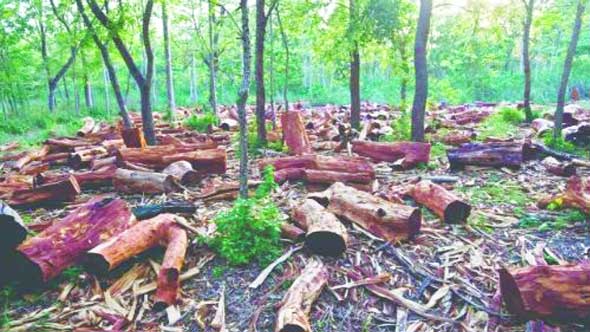Habitat destruction, overexploitation of forest land and climate change have threatened the very survival of our wildlife species. Protecting them and reversing the decline of nature require the Government’s urgent attention
By any standard, forests around the world are the last barriers between mankind and the ill-effects of climate change. How the human race has so far managed to stay outside the grasp of worsening environmental conditions is a miracle and can be attributed to the neutralising capabilities of the forests and their inherent wildlife.
But the health of our forests largely depends on the health and the number of wildlife species they host. It is also a fact that this insurance cover against the vagaries of environment is now depleting at a rapid rate. There has been a 53 per cent decline in the number of forest wildlife populations since 1970, according to the first-ever global assessment of forest biodiversity by the World Wide Fund for Nature (WWF).
Wildlife is an essential component of natural and healthy forests. They play a major role in forest regeneration and carbon storage by engaging in pollination and seed dispersal. Thus, the loss of fauna can have severe implications for forests’ health, the climate and humans, who depend on forests for their livelihoods, said the WWF report titled, Below the Canopy. Until now, forest biodiversity had never been assessed but forest area was often used as a proxy indicator.
The new findings were based on the Forest Specialist Index, developed following the Living Planet Index methodology — an index that tracks wildlife that lives only in forests. In total, data was available for 268 species and 455 populations of birds, mammals, reptiles and amphibians. Of the 455 monitored populations of forest specialists, more than half declined at an annual rate of 1.7 per cent, on average between 1970 and 2014.
While the decline was consistent in these years among mammals, reptiles and amphibians (particularly from the tropical forests), it was less among birds (especially from temperate forests), said the report.
Further, the report found that just the changes in tree cover — deforestation or reforestation — were not responsible for the decline in wildlife populations. Other major threats were habitat loss, forest exploitation and climate change. In fact, the loss of habitat due to logging, agricultural expansion, mining, hunting, conflicts and spread of diseases accounted for almost 60 per cent of threats.
Nearly 20 per cent of the threats were due to overexploitation. Of the 112 forest-dwelling primate populations, 40 were threatened by overexploitation (hunting), the report showed. Climate change, on the other hand, threatened to 43 per cent of amphibian populations, 37 per cent of reptile populations, 21 per cent of bird populations but only 3 per cent of mammal populations. More than 60 per cent of threatened forest specialist populations faced more than one threat, the report noted.
Not only are forests a treasure trove of life on earth, they are also our greatest natural ally in the fight against climate breakdown. Protecting wildlife and reversing the decline of nature require urgent global action. The need is to preserve harmonious land use in our region, including forest management and protect the most valuable surviving ecosystems. Given these circumstances, there is an urgent need for global leaders to kick start an action plan immediately to protect and restore nature and keep our forests standing. Only a quarter of the land on earth is now free of the impacts of human activities.
In a bid to conserve nature, world leaders have agreed to launch a ‘New Deal’ for Nature and People in 2020 in China. The new set of commitments will likely draw together a global biodiversity framework with reinvigorated action under the Paris Agreement and the United Nations-mandated Sustainable Development Goals.
The state of affairs of our forests is not at its best phase. Nations across the world are aware about the growing problem of disappearing forests and wildlife, which is becoming extinct. India, too, is no stranger to this situation but unlike the global forum, our country is yet to take concrete steps that can ensure that our forest remain replete with ample flora and fauna. The annual forest reports and allied data show that since independence, India has lost quite a lot of forest cover, mainly due to man-made reasons than climate change. The usurping of forest land by land mafia is emerging as the biggest reason. This situation is made worse due to poaching activities, which put an end to wildlife.
How can the Government or the judiciary stem the loss of green cover in India and prevent wildlife from poaching remains to be seen. The Government must ensure that Indian forests are treated with priority and protect the wildlife within. Unless immediate measures are taken, the loss for our country would be permanent and the green barrier that stands between us and impacts of climate change would be gone forever.
(The writer is an environmental journalist)
























